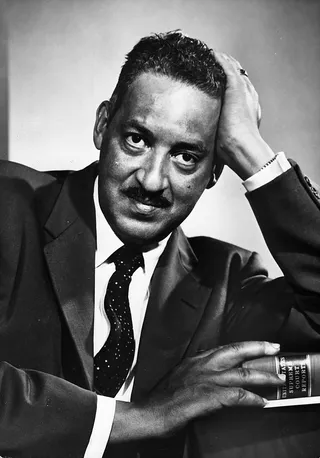How HBCU Students Impacted the Civil Rights Movement
Blacks who showed bravery in the fight for equal rights.

1 / 11
A Fight for Equal Rights - As the country commemorates the 50th anniversary of the March on Washington for Jobs and Freedom of 1963, many look back on bravery displayed by African-Americans who helped lead the civil rights movement. Take a look at the role students and alumni of Black colleges and universities had in the fight for equal rights. —Natelege Whaley (BIRMINGHAM NEWS)

2 / 11
Thurgood Marshall - Thurgood Marshall who was an alumnus of two HBCUs, Lincoln University and Howard University Law School, argued before the Supreme Court in 1954, as an attorney for the NAACP to help win the landmark case of Brown v. Board of Education. The court declared racial segregation in public schools unconstitutional. Marshall later became the first African-American judge appointed to the U.S. Supreme Court.(Photo: Keystone/Getty Images)
Photo By Photo: Keystone/Getty Images

3 / 11
Ella Baker - Ella Josephine Baker is widely known for assisting student activists in forming the Student Nonviolent Coordinating Committee (SNCC) in 1960 at her alma mater. She organized the meeting at Shaw University. Baker challenged school policies she thought was were unfair. After she graduated in 1927, she became active in fighting Jim Crow laws. She joined the NAACP in 1940 and helped organize Martin Luther King, Jr.’s Southern Christian Leadership Conference. (Photo: Courtesy of Library of Congress)

4 / 11
Ruby Doris Smith Robinson - Ruby Doris Smith Robinson, an alumnae of Spelman College, was one of the founding members of SNCC. She became an SNCC field representative and helped found chapters in Charleston, South Carolina, Nashville, Tennessee, and Macomb, Mississippi. As a participant in the 1961 Freedom Rides, Robinson was arrested and sentenced to 45 days in jail in Mississippi, where she experienced police brutality. (Photo: REUTERS/Tami Chappell /Landov)

5 / 11
Patricia and Priscilla Stephens - As a student at Florida A&M University, Patricia Stephens led protests to integrate lunch counters, theaters and swimming pools. At 20, she and her older sister, Priscilla, mobilized students at FAMU to do sit-ins at Woolworth's in 1960. It took Stephens 10 years to graduate from FAMU because she was suspended for her dedication to protests.(Photo: Wikicommons)
ADVERTISEMENT

6 / 11
The Greensboro Four - In February 1960, Ezell A. Blair Jr., Franklin E. McCain, Joseph A. McNeil and David L. Richmond, students of North Carolina A&T, walked into a Woolworth’s in Greensboro, North Carolina, and sat at the “whites only” lunch counter. Hundreds of other Black college students joined them in sit-ins across the nation until Woolworth’s desegregated their stores in July 1960. (Photo: The Washington Times /Landov)

7 / 11
Norman Francis - In 1961, Norman Francis, the long-time president of Xavier University in New Orleans, gave Freedom Riders housing in dorms on his campus after their tour bus was bombed in Alabama. When other hosts in New Orleans were afraid of bomb threats, Francis, who was a dean at the university the time, opened his doors to the young activists. (Photo: Michael DeMocker, NOLA.com/TIMES-PICAYUNE /LANDOV)

8 / 11
Stokely Carmichael - As a freshman at Howard University, Stokely Carmichael became involved in the civil rights movement in 1961. He took his first Freedom Ride through the South to protest segregation of interstate travel. He was arrested in Jackson, Mississippi, and jailed for 49 days after entering a “whites only” bus stop. (Photo: David Fenton/Getty Images)

9 / 11
Bernice Johnson Reagon - In 1962, Bernice Johnson Reagon became part of the Freedom Singers founded by the SNCC. The group traveled nationally to sing songs that expressed the community concerns at the time and to raise money. Reagon began studying at Albany State College in 1959 but was expelled in 1961 after participating in demonstrations sponsored by SNCC. She later transferred to Spelman College, and withdrew to join the Freedom Singers. (Photo: Neilson Barnard/Getty Images)

10 / 11
John Lewis - John Lewis was an organizer of sit-in protests at Nashville lunch counters and also joined the Freedom Riders in 1961 as a student at Fisk University. When he was only 23, Lewis was a keynote speaker at the March on Washington. (Photo: Chris McKay/WireImage)
